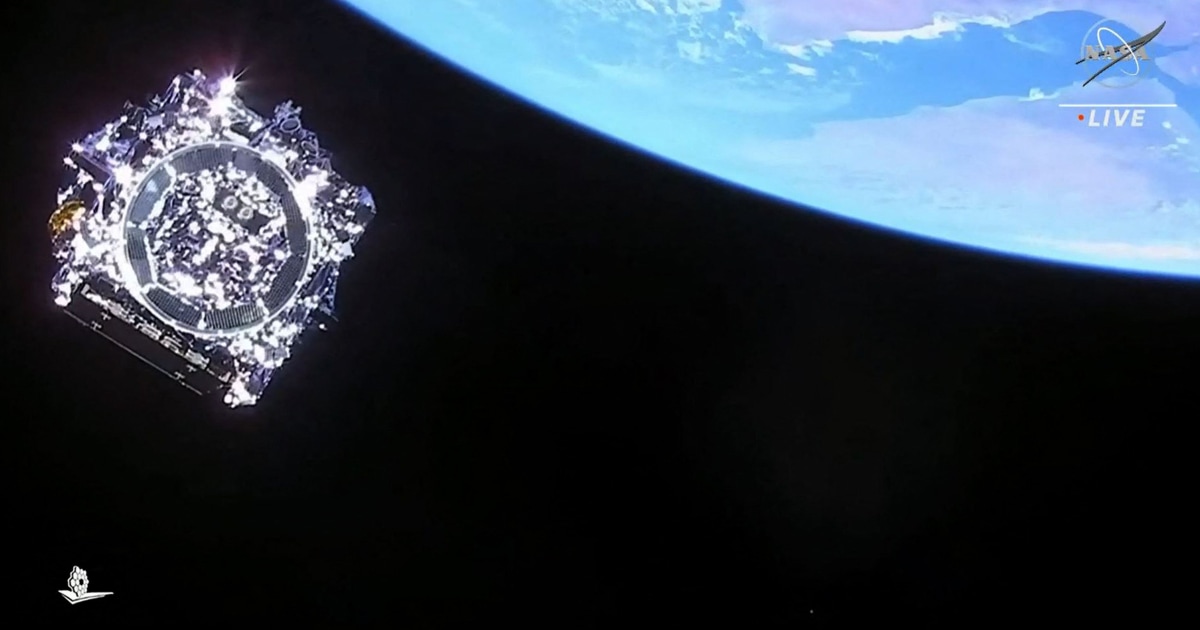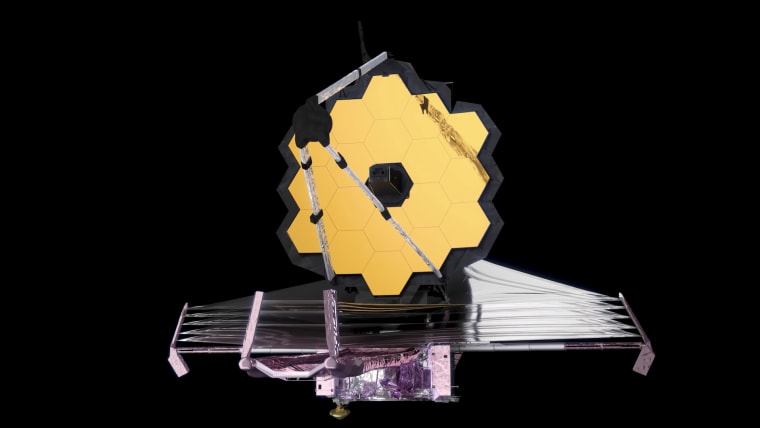It was the best Christmas present NASA could have asked for.
The agency’s James Webb Space Telescope, the world’s largest and most powerful telescope built to date, successfully blasted into orbit Saturday. The launch marked the long-awaited start of the Webb telescope’s mission, after more than 30 years of development and countless delays.
The $10-billion observatory, billed as the successor to the iconic Hubble Space Telescope, is designed to study the early days of the universe, roughly 100 million years after the Big Bang, when the first stars flickered on in the cosmos.
The tennis court-sized observatory launched atop an Ariane 5 rocket at 7:20 a.m. ET from a European spaceport in Kourou, French Guiana. The observatory’s liftoff had been postponed several times, including earlier this month to investigate a faulty data cable and more recently because of bad weather at the South American launch site.
Now that the telescope has reached space, it begins a harrowing, monthlong journey to its designated orbit around the sun, more than a million miles away from Earth.
As Webb travels to its final destination, key parts of the observatory that were folded up to fit inside the rocket will need to unfurl in space. Some of the most nerve-racking stunts will come roughly five days after launch, when the telescope’s huge multilayered sunshield is stretched out and its massive gold-coated primary mirror unfolds.
The risky, carefully choreographed maneuvers are so complex and require such precision that NASA nicknamed the sequence “29 days on the edge.”
“We have about 50 deployments to get right in that first month after launch,” Greg Robinson, the Webb telescope’s program director at NASA, told NBC News earlier this month. “Those first two or three weeks will be what some would call good anxiety.”
The Webb telescope’s primary mirror measures more than 21 feet across, making it the largest to fly in space. The mirror’s size, which dwarfs that of Hubble and other existing space telescopes, gives Webb the sensitivity to see celestial objects that were previously undetectable.
“The more distant something is, the fainter it looks. So the larger the mirror, the fainter the thing you can see,” said Marcia Rieke, an astronomer at the University of Arizona and principal investigator of one of Webb’s four main instruments. “The other thing is that the larger the mirror, the finer the detail you can see.”
Telescopes essentially function as time machines because it takes time for light to travel through space. This means that when Webb studies light from the most distant galaxies in the cosmos, the telescope is actually observing how the universe was billions of years ago.
The Webb telescope is designed to “see” beyond the range of the human eye and other telescopes that observe primarily visible light. Webb’s infrared vision can pierce through thick veils of cosmic gas and dust, allowing it to see celestial objects that might normally appear invisible to other observatories.
Our blood pressure will be high and our hearts beating fast until it’s fully commissioned
Daniel Neuenschwander, director of space transportation at the European Space Agency, said
Webb’s instruments are also sensitive enough to sniff out the atmospheres of exoplanets, to examine their chemical composition and assess whether they could support alien life.
“It’s conceivable that we could find an exoplanet whose atmosphere’s composition — that collection of molecules — is very similar to Earth’s atmosphere,” Rieke said. “That would just be so astounding if we could do that.”
But before Webb begins collecting any science or snapping any photos of the cosmos, the telescope will undergo a rigorous six-month commissioning period to calibrate its instruments and assess the health of its various components.
If all checks out, mission controllers will finally breathe a sigh of relief.
“Our blood pressure will be high and our hearts beating fast until it’s fully commissioned,” said Daniel Neuenschwander, director of space transportation at the European Space Agency, one of NASA’s international partners for the Webb telescope.
After that, it’s anyone’s guess what Webb may discover, Robinson said.
“I’m curious about what’s out there,” he said. “Where do we come from? What’s our place in the universe? Those are the types of things I’m looking forward to learning.”
Denise Chow is a reporter for NBC News Science focused on general science and climate change.






